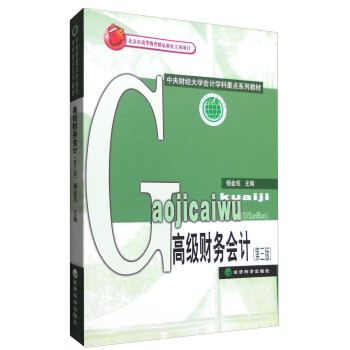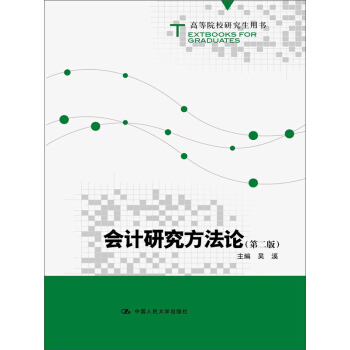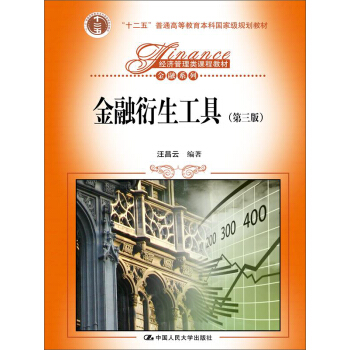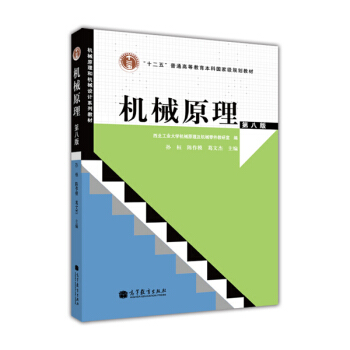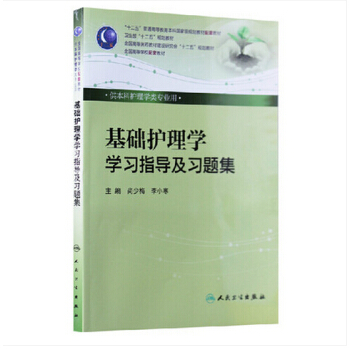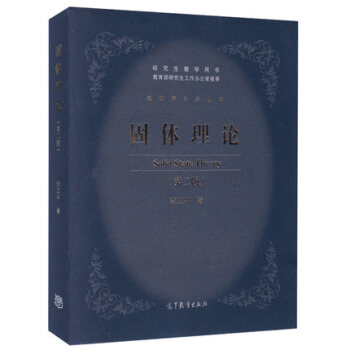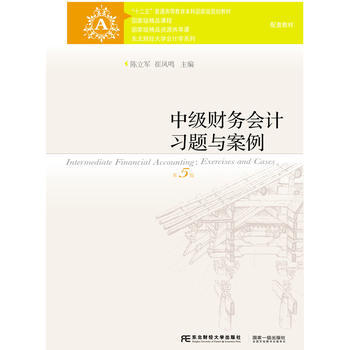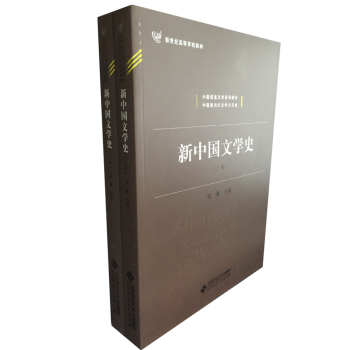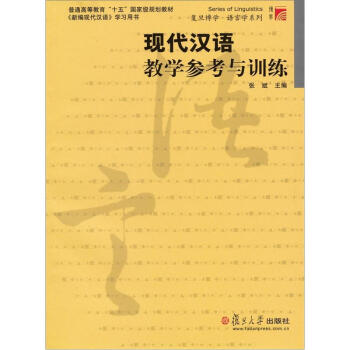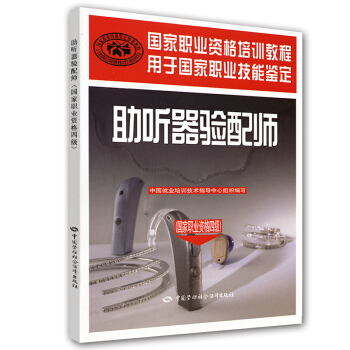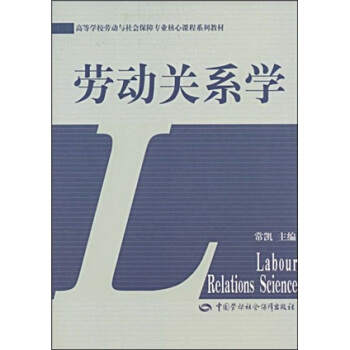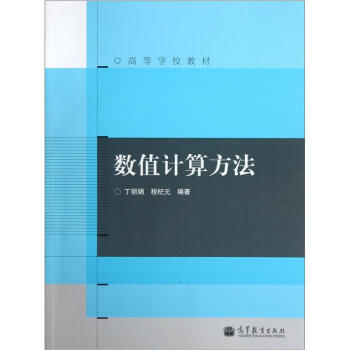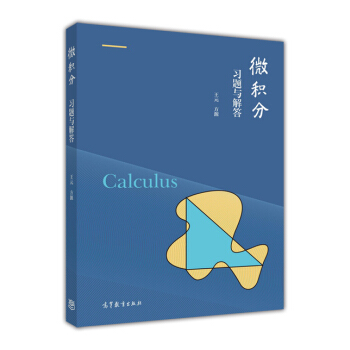![工程熱力學(英文影印版 原書第7版) [ Thermodynamics An Engineering Approach]](https://pic.windowsfront.com/11890592/56eb642aNbd57ce03.jpg)

具體描述
內容簡介
本書介紹瞭工程熱力學的基本原理。內容包括:概述與基本概念,能量、能量傳遞與通用能量分析方法,純物質的性質,閉口係統的能量分析,控製體積的質量和能量分析,熱力學第二定律,熵,火用,氣體動力循環,蒸汽動力循環,製冷循環,熱力學性質關係式,混閤氣體,濕蒸汽和空氣調節,化學反應,化學與相平衡,以及可壓縮流動。書中有大量結閤工程應用的實例,可增加讀者對工程熱力學的興趣,提高解決實際問題的能力,章後的小結和大量的習題可使讀者更好地學習和掌握本書內容。目錄
序ⅲ前言ⅹⅰⅹ第1章概述與基本概念11��1熱力學與能量21��2量綱與單位的重要性31��3係統與控製體積101��4係統的特性121��5密度與相對密度131��6狀態與平衡141��7過程與循環151��8溫度與熱力學第零定律171��9壓力211��10壓力計261��11氣壓計與大氣壓291��12求解問題技巧33本章小結38參考文獻與推薦讀物39習題39第2章能量、能量傳遞與通用能量分析方法512��1引言522��2能量的形式532��3通過熱傳遞能量602��4通過功傳遞能量622��5功的機械形式662��6熱力學第一定律702��7能量轉化效率782��8能源與環境86特殊興趣主題:傳熱機理92本章小結96參考文獻與推薦讀物97習題98第3章純物質的性質1113��1純物質1123��2純物質的相1123��3純物質的相變過程1133��4相變過程的物性圖1183��5物性錶1243��6理想氣體狀態方程1343��7壓縮因子——偏離理想氣體的度量1373��8其他狀態方程174特殊興趣主題:蒸汽壓和相平衡146本章小結150參考文獻與推薦讀物151習題151第4章閉口係統的能量分析1634��1移動界麵做功1644��2閉口係統的能量平衡1694��3比熱容1744��4理想氣體的熱力學能、焓和比熱容1764��5固體和液體的熱力學能、焓和比熱容183特殊興趣主題:生物係統的熱力學內容187本章小結195參考文獻與推薦讀物195習題196第5章控製體積的質量和能量分析2135��1質量守恒2145��2流動工質的流動功與能量2215��3穩定流動係統的能量分析2245��4穩定流動係統的工業設備2275��5非穩定流動過程的能量分析240特殊興趣主題:一般能量方程245本章小結249參考文獻與推薦讀物250習題250第6章熱力學第二定律2736��1熱力學第二定律簡介2746��2熱源2756��3熱機2766��4製冷機與熱泵2816��5永動機2886��6可逆過程與不可逆過程2906��7卡諾循環2936��8卡諾定理2956��9熱力學溫標2976��10卡諾熱機2996��11卡諾製冷機與熱泵302特殊興趣主題:傢用電冰箱305本章小結309參考文獻與推薦讀物310習題310vi工程熱力學vii目錄第7章熵3277��1熵3287��2熵增原理3317��3純物質的熵變3357��4等熵過程3387��5有關熵的物性圖3407��6熵是什麼?3417��7T ds關係式3457��8液體與固體的熵變3467��9理想氣體的熵變3507��10可逆穩定流動功3577��11最小壓縮功3607��12穩定流動設備的等熵效率3647��13熵平衡371特殊興趣主題:降低壓縮空氣的成本383本章小結392參考文獻與推薦讀物393習題394第8章:做功能力的度量4198��1:能量的做功能力4208��2可逆功與不可逆性4238��3熱力學第二定律效率ηⅡ4288��4係統的變4318��5通過熱量、功、質量傳遞4368��6貶值原理與損4398��7平衡:閉口係統4418��8平衡:控製體積452特殊興趣主題:日常生活中的熱力學第二定律461本章小結465參考文獻與推薦讀物466習題466第9章氣體動力循環4839��1動力循環分析的基本思想4849��2卡諾循環及其在工業中的價值4869��3空氣標準假設4889��4往復式機器概述4889��5奧托循環:點燃式熱機的理想循環4909��6狄塞爾循環:壓燃式熱機的理想循環4969��7斯特林和愛立信循環4999��8布雷頓循環:燃氣輪機的理想循環5039��9具有迴熱的布雷頓循環5109��10中冷、再熱、迴熱布雷頓循環5139��11理想射流引射循環5179��12氣體動力循環的熱力學第二定律分析523特殊興趣主題:通過良好的駕駛習慣節油省錢527本章小結533參考文獻與推薦讀物535習題535第10章蒸汽動力循環與聯閤動力循環55110��1卡諾蒸汽循環55210��2朗肯循環:理想的蒸汽動力循環55310��3實際蒸汽動力循環對於理想循環的偏離55610��4如何提高朗肯循環的效率?55910��5理想再熱朗肯循環56310��6理想迴熱朗肯循環56710��7蒸汽動力循環的熱力學第二定律分析57510��8熱電聯産57710��9燃氣.蒸汽聯閤動力循環582特殊興趣主題:二元氣相循環585本章小結588參考文獻與推薦讀物588習題589第11章製冷循環60711��1製冷機與熱泵60811��2逆嚮卡諾循環60911��3理想蒸氣壓縮製冷循環61011��4實際蒸氣壓縮製冷循環61311��5蒸氣壓縮製冷循環的熱力學第二定律分析61511��6製冷劑的閤理選擇62011��7熱泵係統62211��8蒸氣壓縮製冷係統的改進62311��9氣體製冷係統63011��10吸收式製冷係統633特殊興趣主題:熱電發電和製冷係統636本章小結638參考文獻與推薦讀物639習題639第12章熱力學性質關係式65712��1數學知識——偏微分與相應關係65812��2麥剋斯韋關係式66312��3剋拉貝隆方程66412��4du、dh、ds、cv和cp的通用關係式66712��5焦耳.湯姆孫係數67412��6真實氣體的Δh、Δu和Δs676本章小結681參考文獻與推薦讀物682習題682第13章混閤氣體68913��1混閤氣體的成分:質量分數與摩爾分數69013��2混閤氣體的P.v.T關係:理想氣體和真實氣體69213��3混閤氣體的性質:理想氣體和真實氣體697特殊興趣主題:化學勢和混閤物的分離功705本章小結716參考文獻與推薦讀物717習題717第14章氣體.蒸汽混閤物與空氣調節72714��1乾空氣和大氣中的空氣72814��2空氣的絕對濕度和相對濕度72914��3露點溫度73114��4絕熱飽和溫度與濕球溫度73314��5焓濕圖73614��6人體舒適度與空氣調節73714��7空氣調節過程739本章小結749參考文獻與推薦讀物751習題751第15章化學反應76315��1燃料與燃燒76415��2理論與實際的燃燒過程76815��3生成焓與燃燒焓77515��4反應係統的熱力學第一定律分析77815��5絕熱火焰溫度78415��6反應係統的熵變78615��7反應係統的熱力學第二定律分析788特殊興趣主題:燃料電池794本章小結796參考文獻與推薦讀物797習題797第16章化學與相平衡80916��1化學平衡的判據81016��2理想氣體混閤物的平衡常數81216��3關於理想氣體混閤物平衡常數Kp的討論81616��4同步反應的化學平衡82016��5Kp隨溫度的變化82216��6相平衡824本章小結832參考文獻與推薦讀物833習題833第17章可壓縮流動84317��1滯止點性質84417��2聲速與馬赫數84717��3一元等熵流動84917��4噴管的等熵流動85617��5激波與膨脹波86517��6有傳熱與可忽略摩擦的管道流動(瑞利流)88017��7蒸汽噴管889本章小結892參考文獻與推薦讀物893習題894附錄熱力性質圖錶903錶A.1摩爾質量、氣體常數和臨界點屬性904錶A.2各種常見氣體的理想氣體比熱容905錶A.3常見液體、固體和食物的性質908錶A.4飽和水——溫度錶910錶A.5飽和水——壓力錶912錶A.6過熱水914錶A.7壓縮液態水918錶A.8飽和冰.水蒸氣919圖A.9水的T.s圖920圖A.10水的焓熵圖921錶A.11134a製冷劑的飽和溫度錶922錶A.12134a製冷劑的飽和壓力錶924錶A.13過熱134a製冷劑925圖A.14134a製冷劑的P.h圖927圖A.15納爾遜.奧伯特通用壓縮係數圖928錶A.16高海拔大氣的性質929錶A.17空氣的理想氣體特性930錶A.18氮氣(N2)的理想氣體特性932錶A.19氧氣(O2)的理想氣體特性934錶A.20二氧化碳(CO2)的理想氣體特性936錶A.21一氧化碳(CO)的理想氣體特性938錶A.22氫氣(H2)的理想氣體特性940錶A.23水蒸氣(H2O)的理想氣體特性941錶A.24單原子氧(O)的理想氣體特性943錶A.25羥基(OH)的理想氣體特性943錶A.26在25℃、1atm下的標準生成焓、生成吉布斯函數和絕對熵944錶A.27一些烴類及常見燃料的性質945錶A.28平衡常數KP的自然對數946圖A.29通用焓差圖947圖A.30通用熵差圖948圖A.31總壓1atm下的焓濕圖949錶A.32對於k=1��4的理想氣體的一維等熵可壓縮流體方程950錶A.33k=1��4的理想氣體的一維正激波函數951錶A.34k=1��4的理想氣體的瑞利流動函數952前言/序言
用戶評價
The sheer weight of this volume is an immediate physical testament to the comprehensive nature of its subject matter. Holding it, one can’t help but feel a sense of anticipation, a slight apprehension perhaps, about the intellectual journey it promises. The paper, while perhaps not the absolute highest quality archival paper, is certainly robust enough for the rigors of student use – think highlights, underlines, and the inevitable coffee ring that somehow always finds its way onto a study desk. The binding, thankfully, appears to be of a sturdy nature, suggesting it won’t fall apart after a few chapters, a common frustration with less well-constructed textbooks. The layout of the pages is what truly strikes me. It’s not overly ornate or designed with gratuitous visual flair. Instead, it prioritizes clarity and readability. The typeface is a sensible choice, easy on the eyes even during extended reading sessions, which, let’s be honest, are inevitable when tackling thermodynamics. Equations are presented with a satisfying neatness, and the accompanying diagrams, even in their printed form, are generally well-defined and convey the intended information effectively. There’s a deliberate, almost architectural quality to how the information is structured, guiding the reader through complex concepts in a logical progression. It feels like a carefully constructed edifice of knowledge, where each section builds upon the last, creating a strong foundational understanding. This isn’t a book designed for casual browsing; it’s a tool, a comprehensive resource intended for serious study and application. The very act of holding it, feeling its substance, creates an unspoken expectation of depth and thoroughness.
評分The physical manifestation of this book is rather imposing, suggesting a comprehensive treatment of its subject. Its cover is understated, a deliberate choice that emphasizes the intellectual substance within rather than superficial aesthetics. The paper quality is noteworthy – it feels substantial and resilient, capable of absorbing copious amounts of highlighting and marginal notes without becoming fragile. The binding appears to be of a high standard, indicating that the book is built to withstand the rigors of frequent use, a crucial consideration for any student or professional. Opening the book reveals a layout that is exceptionally conducive to focused study. The typeface is clean and legible, ensuring that extended reading sessions are not an ordeal. The presentation of equations is methodical and clear, and the accompanying illustrations, even in their printed format, are detailed enough to convey the necessary spatial and conceptual information. This is a textbook that clearly prioritizes the effective transmission of knowledge over any form of ostentatious design. It conveys a sense of academic authority and reliability. The "影印版" designation is also a point of interest, suggesting a direct lineage to the original publication and a preservation of the authors' precise wording and conceptual framing, which is invaluable in a field as precise as thermodynamics.
評分Upon first encounter, the physical presence of this textbook is quite commanding. Its dimensions and weight suggest a significant body of knowledge contained within. The cover, a utilitarian design without superfluous embellishments, immediately communicates its academic intent. The paper quality is commendable; it possesses a certain thickness and texture that hints at durability, capable of withstanding the rigors of extensive study, including the inevitable annotations and references. The binding appears to be quite robust, designed to endure repeated opening and closing without succumbing to wear and tear, a vital attribute for a textbook intended for prolonged use. The internal layout is characterized by a deliberate simplicity. The font is clear and generously spaced, facilitating extended periods of reading and comprehension, particularly when delving into complex mathematical expressions. There's a distinct absence of distracting graphic elements, allowing the reader to maintain focus on the substantive content. The diagrams and figures, even in their printed form, are rendered with sufficient clarity to support the textual explanations effectively. This is not a book that relies on visual spectacle; its strength lies in the meticulous organization and presentation of information. It exudes an aura of academic seriousness, an invitation to engage deeply with the fundamental principles of engineering thermodynamics. The "影印版" designation underscores its fidelity to the original publication, offering a direct gateway to the authors' intended exposition.
評分The tactile experience of this book is quite significant. The cover, while not overly decorated, has a satisfying matte finish that resists fingerprints, a small but appreciated detail for something that will likely be handled frequently. The pages have a weight to them, a substance that suggests they are made to last. They don't feel flimsy or prone to tearing easily. When you lay the book open, it has a tendency to stay open, which is a godsend for those moments when you need both hands to work through a complex derivation. The typography is clear and well-spaced, making it easy to navigate through lengthy paragraphs of text and intricate equations. There are no distracting visual elements, no colorful sidebars or excessive use of bolding and italics that can often break the flow of concentration. The diagrams are reproduced with a clarity that allows for detailed examination, crucial for understanding the physical systems being analyzed. It’s a book that feels designed for serious work. You can imagine placing it on a desk, surrounded by scratch paper and a calculator, ready for a long session of problem-solving. The overall impression is one of robust utility. It’s a tool, and like any good tool, its design prioritizes functionality and durability. The fact that it's an "英文影印版" also adds a layer of authenticity, ensuring that you're engaging directly with the original scholarly work, without any potential misinterpretations that can arise from translation.
評分The sheer physical presence of this tome is a powerful indicator of its encyclopedic scope. Its cover, while not ostentatious, possesses a certain understated elegance, a testament to its academic pedigree. The paper itself is of a pleasing quality, possessing a satisfying density that suggests durability and a resistance to wear and tear, even with the most enthusiastic note-taking. The binding appears exceptionally sturdy, promising to keep the pages securely in place through countless consultations and study marathons. When one opens the book, the pages lay remarkably flat, a small but significant comfort that aids in focused study. The typeface is a masterclass in legibility, meticulously chosen to minimize visual fatigue during extended engagement with complex theoretical concepts and intricate mathematical expressions. The internal design eschews unnecessary visual embellishments, prioritizing the clear and direct presentation of information. The diagrams, even in their printed format, are sharp and informative, serving as crucial visual aids. This is a textbook that radiates an aura of academic integrity and practical applicability, a true workhorse for the aspiring engineer. The "英文影印版" aspect is a crucial detail, ensuring that the reader is interacting directly with the original scholarship, unmediated by translation, preserving the nuanced meaning and precise terminology essential in a technical field.
評分From a purely aesthetic standpoint, the book presents a certain gravitas. It’s not a glossy magazine of a textbook, but rather a substantial, no-frills academic tome. The cover art, if one can even call it that, is utilitarian, conveying its purpose directly without any pretense. The paper itself has a pleasing heft, not so thin that it feels cheap, nor so thick that the book becomes unwieldy. It’s the kind of paper that can endure a fair amount of annotation, whether it's in the form of pencil marks deciphering a particularly tricky problem or ink underlining a key definition. The spine seems well-stitched, suggesting a durability that’s crucial for a book that’s likely to be a constant companion through an entire course, if not longer. When you open it, the pages lie reasonably flat, which is a surprisingly important detail for anyone who has struggled with a book that insists on snapping shut. The font choice is unpretentious yet perfectly readable, a critical factor when grappling with intricate formulas and dense explanatory text. The visual organization of the material within the pages is highly functional. It’s clear that the emphasis here is on conveying information effectively rather than dazzling the reader with graphic design. This focus on substance over style is, in many ways, exactly what one would hope for in an engineering textbook. It projects an image of seriousness and academic rigor, setting the stage for the serious study it demands. The "影印版" aspect also means you're getting a direct, unadulterated reproduction of the original, preserving the integrity of the authors' presentation.
評分There's a certain tactile satisfaction that comes with holding this book. The cover, though simple, feels substantial and well-made, hinting at the quality within. The paper itself is a pleasure to touch – it has a good weight, feels smooth, and crucially, doesn't bleed through easily, which is a blessing when one is prone to using multiple colors for highlighting. The binding seems particularly well-executed, offering a sense of confidence that the book will withstand the inevitable knocks and bends of being carried around in a backpack or propped open for hours on end. The way the pages lay open is also noteworthy; it doesn’t fight you, which, for anyone who has wrestled with a stiff, uncooperative textbook, is a genuine relief. The font used for the text is a perfect balance of readability and elegance, making long chapters feel less daunting. The spacing between lines and paragraphs is generous, further contributing to the ease of comprehension. This isn't a book that assaults the reader with a riot of colors or distracting graphics; instead, it presents its content in a clean, orderly fashion, allowing the subject matter to take center stage. The diagrams, even reproduced, are clear and easy to interpret, which is vital for grasping the practical applications of thermodynamic principles. The "影印版" nature of the text assures me that I'm getting the authentic intellectual product, exactly as the authors intended, which is invaluable when dealing with such a foundational and precise scientific discipline.
評分這本書的封麵設計,那 is a classic textbook cover, solid and no-nonsense. It immediately signals a serious academic endeavor. The title itself, “Thermodynamics: An Engineering Approach,” is a clear declaration of its purpose and audience. No fluffy language, no trendy graphics, just the direct assertion of what’s inside. This is the kind of book that doesn't try to be overly flashy; its value is meant to be found in the depth and rigor of its content. Flipping through it for the first time, the sheer volume of pages and the density of the text are both intimidating and reassuring. It suggests that every concept, every principle, has been thoroughly explored and explained. The paper quality feels substantial, the kind that can withstand repeated handling and the occasional scribbled note in the margins. It’s the kind of textbook you’d see on a seasoned engineer’s shelf, a well-worn reference that has seen its fair share of problem-solving. The binding looks robust, designed to last through countless study sessions, perhaps even across multiple academic years or a demanding professional career. The typeface chosen is clean and legible, crucial for absorbing complex equations and detailed explanations. There’s a certain quiet confidence in its presentation, a tacit promise that within these pages lies a comprehensive understanding of a fundamental engineering discipline. It’s not a book that screams for attention, but one that commands respect through its sheer presence and the implied wealth of knowledge it holds. The translated title, "工程熱力學 (英文影印版 原書第7版)," further solidifies its international recognition and the established authority of the original work. This suggests a lineage of refinement, with each edition building upon the successes and addressing the evolving needs of engineering education. It’s a tangible piece of academic heritage, presented in a format that prioritizes accessibility for a global audience.
評分This textbook possesses a satisfying solidity, a reassuring heft that speaks to the depth of its content. The cover design is refreshingly devoid of unnecessary flair, opting for a straightforward, academic aesthetic that immediately signals its purpose. The paper stock feels substantial, thick enough to withstand numerous dog-ears and marginalia without degrading, promising longevity through an entire course and beyond. The binding seems particularly robust, a welcome feature that suggests the book will remain intact even after being repeatedly opened and closed, a common failing of lesser quality texts. When you lay the book open, it tends to lie relatively flat, a small but crucial detail for ease of use during study sessions. The font chosen is eminently readable, well-suited for prolonged engagement with complex concepts and intricate equations. There are no distracting visual elements to pull the eye away from the core material; the focus is squarely on the dissemination of knowledge. The diagrams are clear and well-reproduced, providing ample detail for thorough understanding. It projects an image of academic rigor and is clearly intended as a serious tool for learning. The "英文影印版" aspect also ensures that you are receiving the original authorial intent without any potential dilution or alteration through translation, offering an unvarnished academic experience.
評分The overall impression of this book is one of robust academic utility. Its cover is designed with practicality in mind, eschewing trends for a timeless, functional appearance. The paper is of a good quality, with a pleasant weight and texture that feels durable and capable of supporting extensive annotation and frequent referencing. The binding is noticeably strong, suggesting that the book will hold up well over time and through repeated use, a vital characteristic for a reference that is likely to be consulted often. When opened, the pages lie reasonably flat, facilitating a comfortable study experience without the need for constant manual pressure. The font selection is straightforward and highly readable, which is essential for absorbing complex technical information without undue eye strain. The organization of the material within the pages is logical and uncluttered, with a clear emphasis on conveying information efficiently. The diagrams and figures are reproduced with sufficient clarity to be easily understood. This is a book that feels like a solid, dependable tool, designed to be a reliable resource for learning and problem-solving. The "英文影印版" signifies a direct connection to the original, unadulterated academic work, ensuring authenticity and a faithful representation of the authors' contributions.
評分要買的注意瞭,除瞭有中文版的目錄以外,全是是純英文版的,如果你有信心看得懂就買,但是感覺編排還挺不錯,知識點也很詳細
評分很好
評分質量很好,品質保障。
評分工程知識與生活實踐結閤 ,非常好。使用的是公製單位,簡單明瞭,非常好。
評分很厚的一本,英文版,慢慢看,當做復習
評分一直北京東買書,是正版的,不錯啊
評分很厚的一本,英文版,慢慢看,當做復習
評分很好的書,為下學期準備,經典教材,參考價值很大,推薦大傢適用
評分本書介紹瞭工程熱力學的基本原理。內容包括:概述與基本概念,能量、能量傳遞與通用能量分析方法,純物質的性質,閉口係統的能量分析,控製體積的質量和能量分析,熱力學第二定律,熵,火用,氣體動力循環,蒸汽動力循環,製冷循環,熱力學性質關係式,混閤氣體,濕蒸汽和空氣調節,化學反應,化學與相平衡,以及可壓縮流動。書中有大量結閤工程應用的實例,可增加讀者對工程熱力學的興趣,提高解決實際問題的能力,章後的小結和大量的習題可使讀者更好地學習和掌握本書內容。
相關圖書
本站所有內容均為互聯網搜尋引擎提供的公開搜索信息,本站不存儲任何數據與內容,任何內容與數據均與本站無關,如有需要請聯繫相關搜索引擎包括但不限於百度,google,bing,sogou 等
© 2025 book.coffeedeals.club All Rights Reserved. 靜流書站 版權所有


